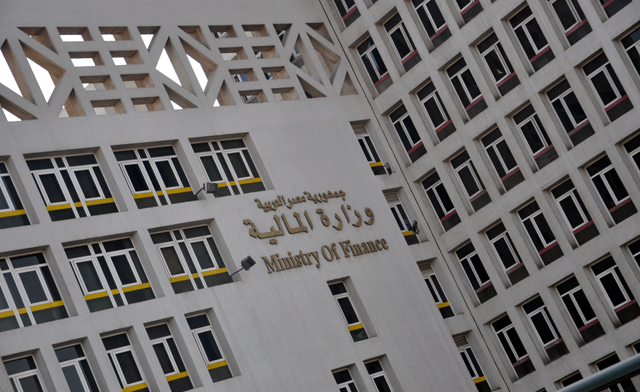
Over the three previous articles we have tried to identify the social and cultural dimensions of the harassment phenomenon, and we considered this phenomenon to be mainly associated with the spread, growth, and rebellion of the slums in recent years. In the interpretation of the emergence of middle-class dwellers practicing harassment, we used the expression “slum-isation of the middle class and working-class neighbourhoods” and criticised the interchange of the terms “slum-isation” and “ruralisation.” We also criticised the concept of “informal” neighbourhoods, linking them to the “informal economy.” In our past discussions, we pinpointed four attributes of slums: the first, that most slum residents are marginalised; second, that these residents are poor; third, that these neighbourhoods lack utilities, services, and urban and humanitarian planning in advance; and fourth and last that these neighbourhoods are recently established and their population is not socio-culturally homogenous nor does it have the socio-cultural potential for coexistence.
The success of slum-isation, as noted before, is linked to the spread of slums to popular neighbourhoods, as well as the break of socio-cultural patterns in the middle class which has given the space for slum-isation to spread. In this article, we will explain this break through several reasons. The most important reason is the criminalization of teamwork, which has led to people to act more individually and take individual decisions, such as traveling to oil-rich countries or turning a blind eye to political-legal or even socio-cultural dimensions of gratuities, bribes, and ambiguous ways of making money like tutoring.
One of the reasons for the break in socio-cultural patterns is the spread of political Islam within the middle class. This trend specifically did not just establish socio-political programmes and orientations, but also succeeded in spreading socio-cultural values and norms. We can question whether these values have been established or have succeeded as alternative models, but we cannot ignore the fact that the values and norms put forth by the currents of political Islam have succeeded in disrupting already established socio-cultural patterns, and weakening them to the point that slum-isation has become possible. It is interesting that slum-isation itself, within the slums and the neighbourhoods, allowed for the emergence of radical religious currents as a “disinfecting” reaction on the one hand, and a fascist or semi-fascist reaction on the other. This is what allows us to describe slum-isation and radical religious groups as two sides of the same coin. Both of them justify the existence of the other. The depth of their crude existence at the forefront of the scene, regardless of their real influence on the ground, is what has caused traditional and well established socio-cultural patterns to take a back seat.
The individual solution, which helped some to obtain exponentially higher incomes than those of their peers, causes an imbalance in the social structure formed by socio-cultural patterns. This has led to a break in these patterns within working-class neighbourhoods. For example, previously a social infrastructure determined by a specific salary range, values, and customs\was in place, but when one of the craftsmen travelled from his neighbourhood to an oil country and returned, his financial position would be stronger than some of the neighbourhood’s top dignitaries. This craftsman may not have destroyed the prestige and status of these leaders, perhaps instead imposing his will, one that does not take into account the well-established patterns of the area, and thus they break and the path is paved for slum-isation.
The third main reason behind the break in established socio-cultural patterns among the middle classes is the expansion of these classes and their clear division into some groups that grew richer and almost became incorporated into the upper class while other groups became so impoverished that they approached marginalisation. These types of divisions, and specifically through their connection to a re-distribution of geography across the poor and the rich, led to a significant change in the social structures of richer groups as compared to the social structure of the poorer groups. This is the change that produced a breakage in socio-cultural patterns, because the divisions that we referred to did not break the middle class clean into two; instead, different levels and social structures were created for the poor and the rich. This resulted in something resembling social fragmentation associated with what could be considered a collapse or fragmentation of value systems.
This issue increases the intensity of polarisation among the rich and the poor within the middle class. It is related to another very important problem that we refer to as a separation or social distribution of neighbourhoods and residential areas, and the process has always existed within another division we call a cultural-civilisational one among the “local” and the “foreign.”
Several decades ago, the world of the middle class was detailed by Naguib Mahfouz in his trilogy through descriptions of the old working-class neighbourhoods of Gamaleya, Darb al-Ahmar, Sayeda Zeinab, and so on. This world was expanded to include the “local” middle cases with all of its components, where the shop owners and the Effendi all lived side by side with the labourers and factory workers, and these neighbourhoods could be described as “local” neighbourhoods. These neighbourhoods were not like Zamalek or Heliopolis, for example, or similar neighbourhoods that were home to Bashas and Effendi, and the division between the “local” and the “foreign” took place on the basis of a cultural-civilisational split. This was the only split that did not produce other neighbourhoods, and the division within local groups between the poor and the rich did not precipitate different neighbourhoods as is now the case.
The fourth and last main reason that we can use to explain the break in the socio-cultural patterns of the middle class is these classes’ lack of ability, in light of what we have discussed, to develop their patterns in spite of all of the great changes imposed by technological development, particularly regarding communication. These changes and developments allowed other competing value systems to enter from other countries shake the foundations of the entrenched traditional patterns. While these traditional patterns should have attempted to accommodate this competition, contain, or confront it, they were largely incapable and retreated against the attack, especially in light of the breaks that resulted from the previous reasons we discussed. In this way, a great weakness in the face of modern challenges made these patterns even weaker, and with time, they cracked.
In the next article, we will try to explain how the state confronted what was considered the danger of the slums and how these slums began to revolt.
Farid Zahran is a publisher and writer. He is the co-founder of the Egyptian Social Democratic Party.


